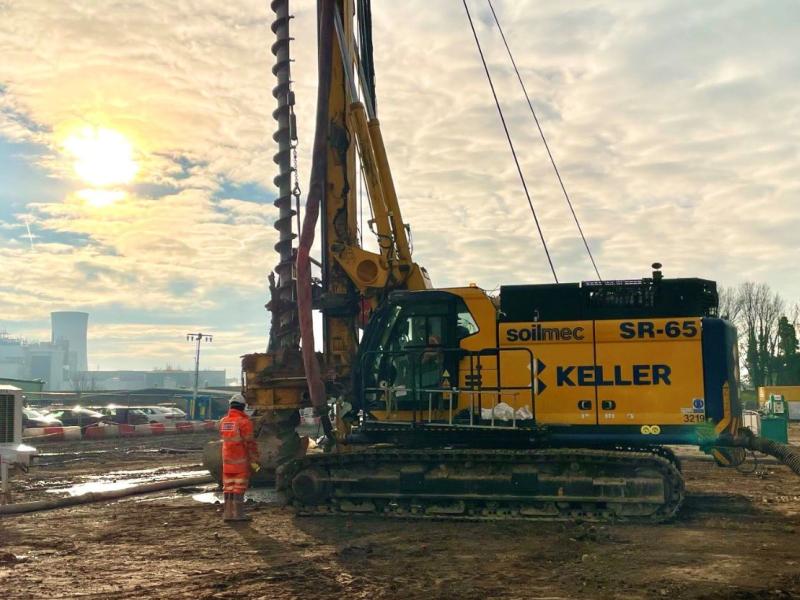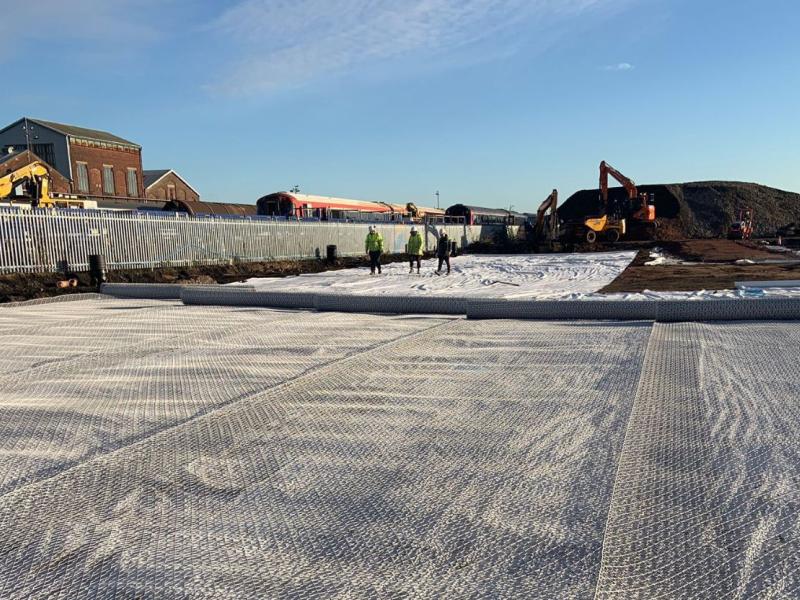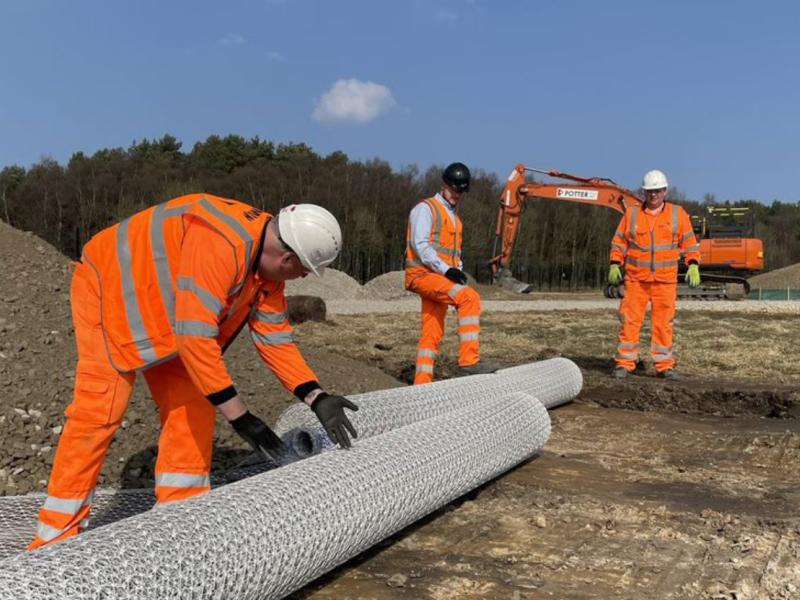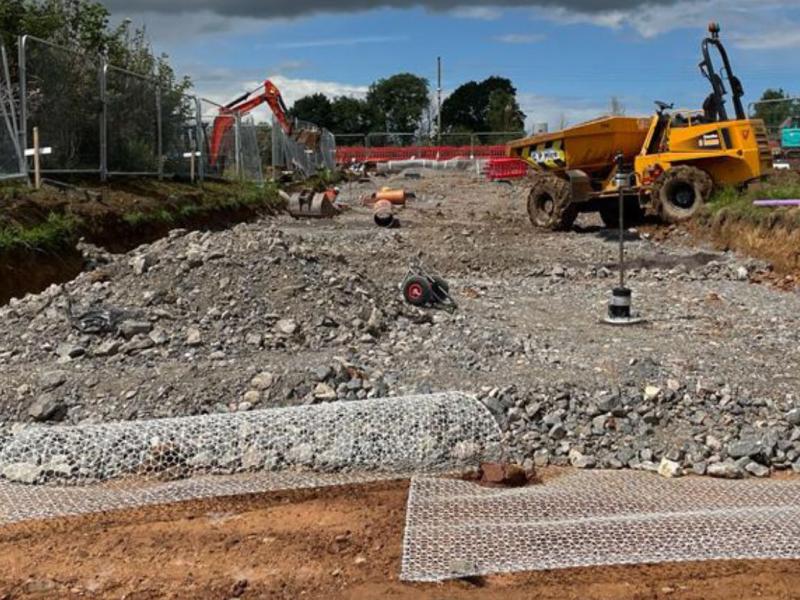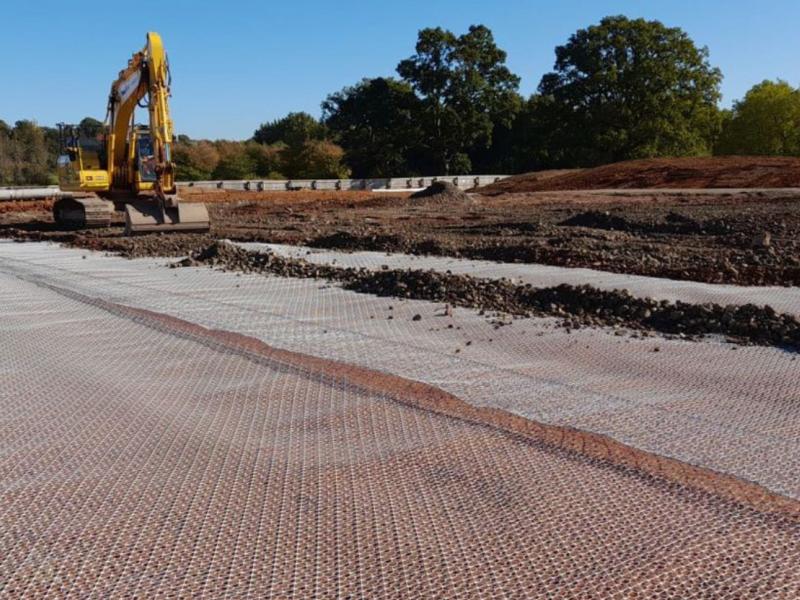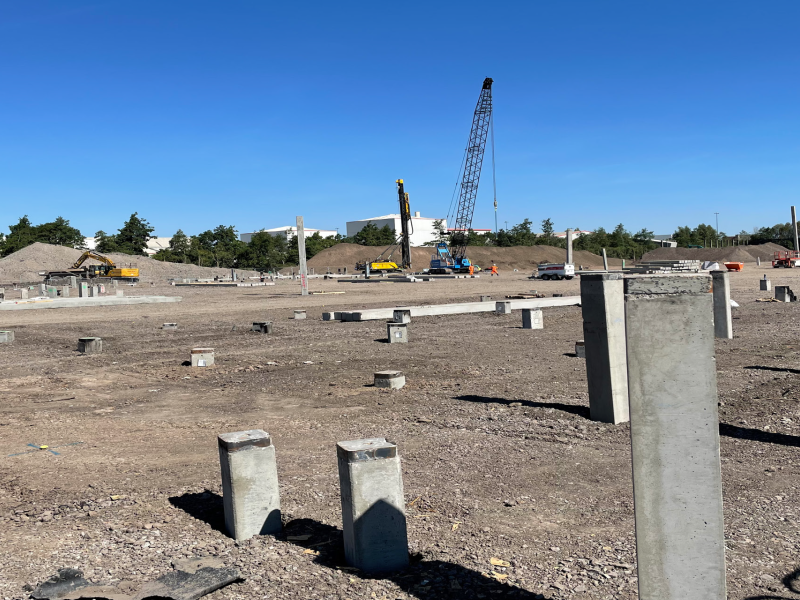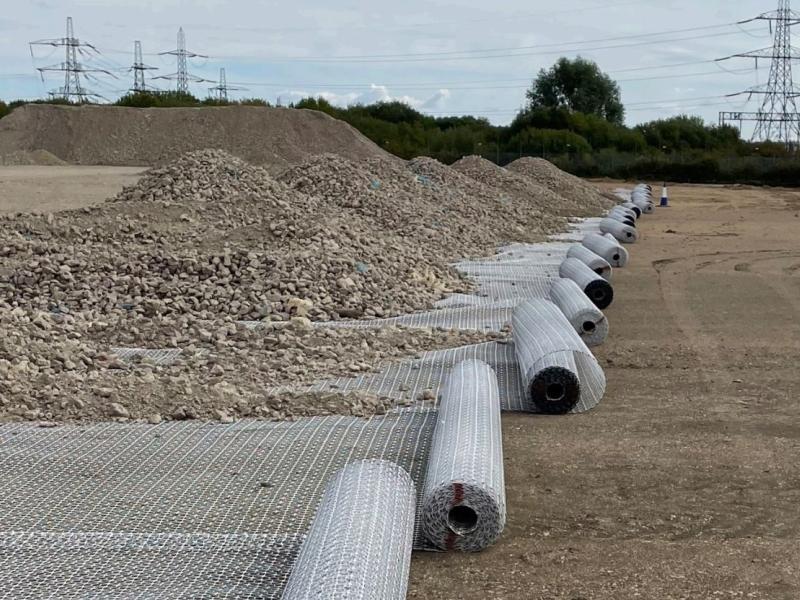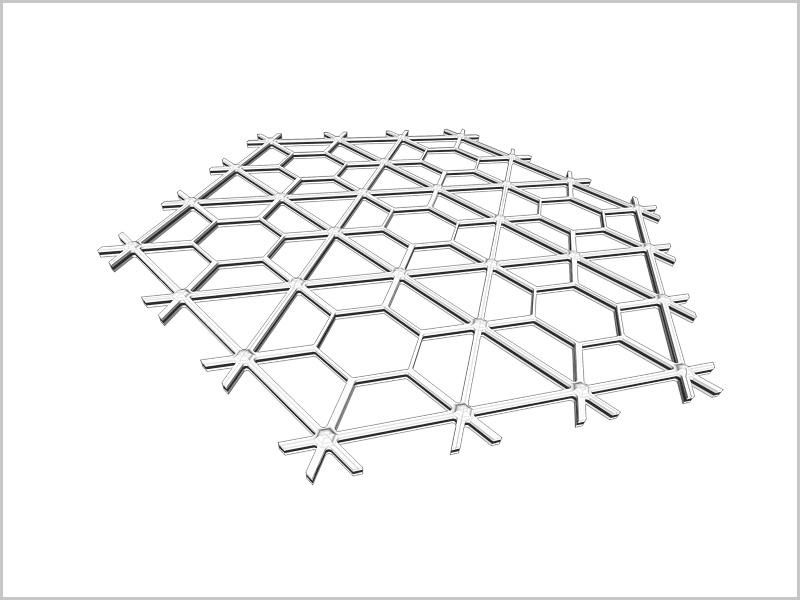
NORTH HEYBRIDGE ESTATE SUBGRADE STABILISATION WITH TENSAR INTERAX
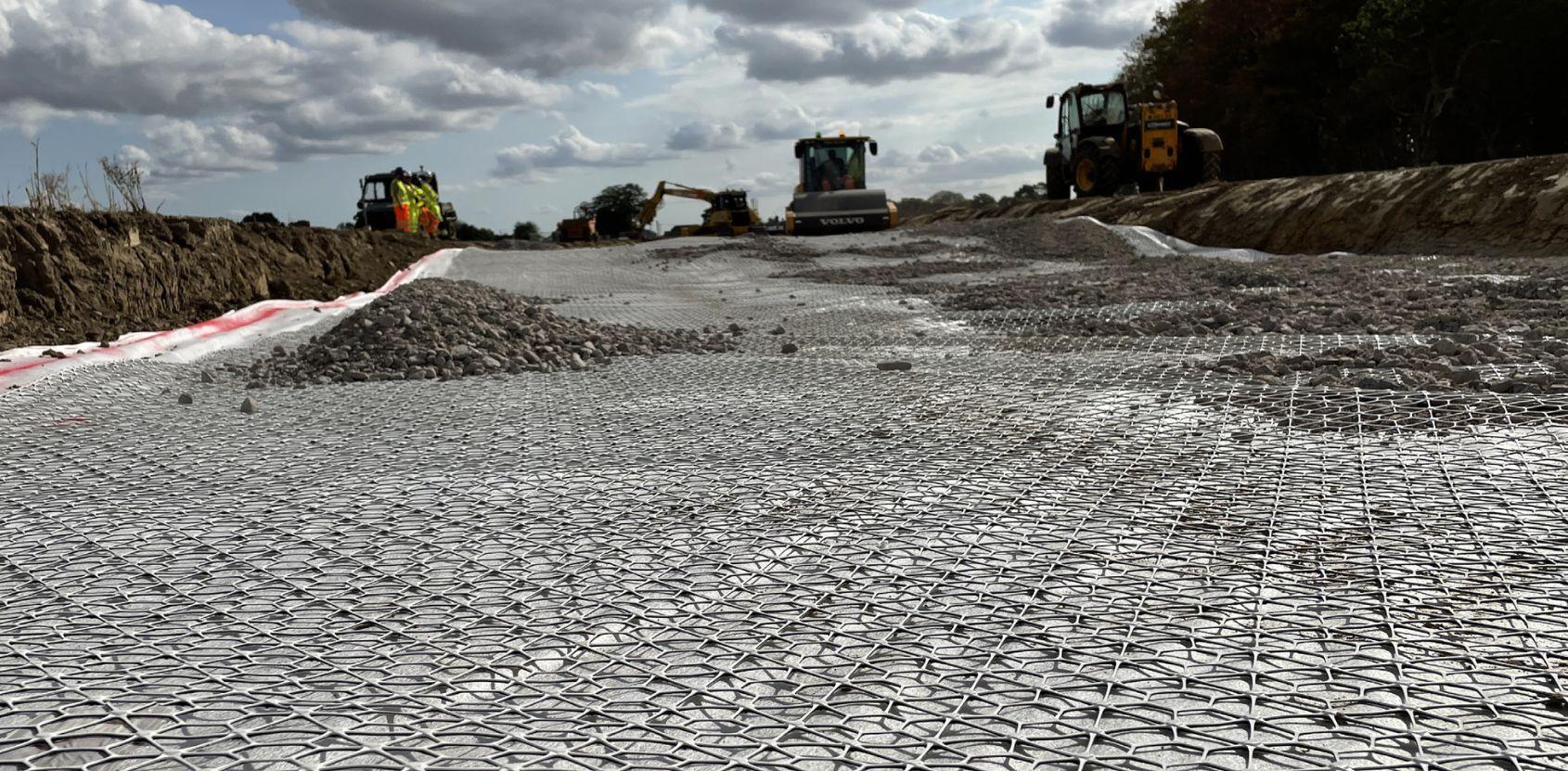
PROJECT DESCRIPTION
To facilitate the construction of a new road at North Heybridge, a Tensar Mechanically Stabilised Layer (MSL) incorporating Tensar InterAx geogrid was utilised to act as a capping over low strength soils which was required to achieve a Foundation Class 1 as required by Essex County Council’s specification from CD225: Design for New Pavement Foundations.
A cost-effective solution was required when low strength subgrade soils were encountered across the site. The pavement design needed to achieve a prescribed CD225 foundation class to allow Essex County Council to adopt the carriageway. Project granular fill costs were high as it was being imported from outside of the local area.
OUR SOLUTION
Tensar determined the thickness requirements for a Mechanically Stabilised Layer (MSL) design using Tensar InterAx geogrid to meet the CD225 foundation requirements as well as dealing with construction trafficking close to the low strength subgrade. The Tensar stabilised capping layer reduced granular fill quantities as well as project excavation operations and also offered a more sustainable solution by reducing the carbon footprint of construction and transportation activities.
PRODUCT USED
Tensar® InterAx® Geogrid
- Speeds up construction, saving up to 70% in aggregate section reduction
- Optimised geometry design for maximum confinement and compaction of granular fill, creating the most efficient mechanically stabilised layer (MSL)
- Improves compaction and restrict the movement of the particles over time, retaining the stiffness long term and further enhancing performance of the MSL
- Results in a more resilient solution that will withstand severe weather events, the increasing impact of climate change, and other challenging environmental conditions
- Improves interaction between the geogrid and aggregate for better performance
- Less aggregate is required to meet project requirements, which leads to savings on cost, time and carbon emissions
- Ideal for subgrade stabilisation, roads, heavy-duty pavements, and working platforms


